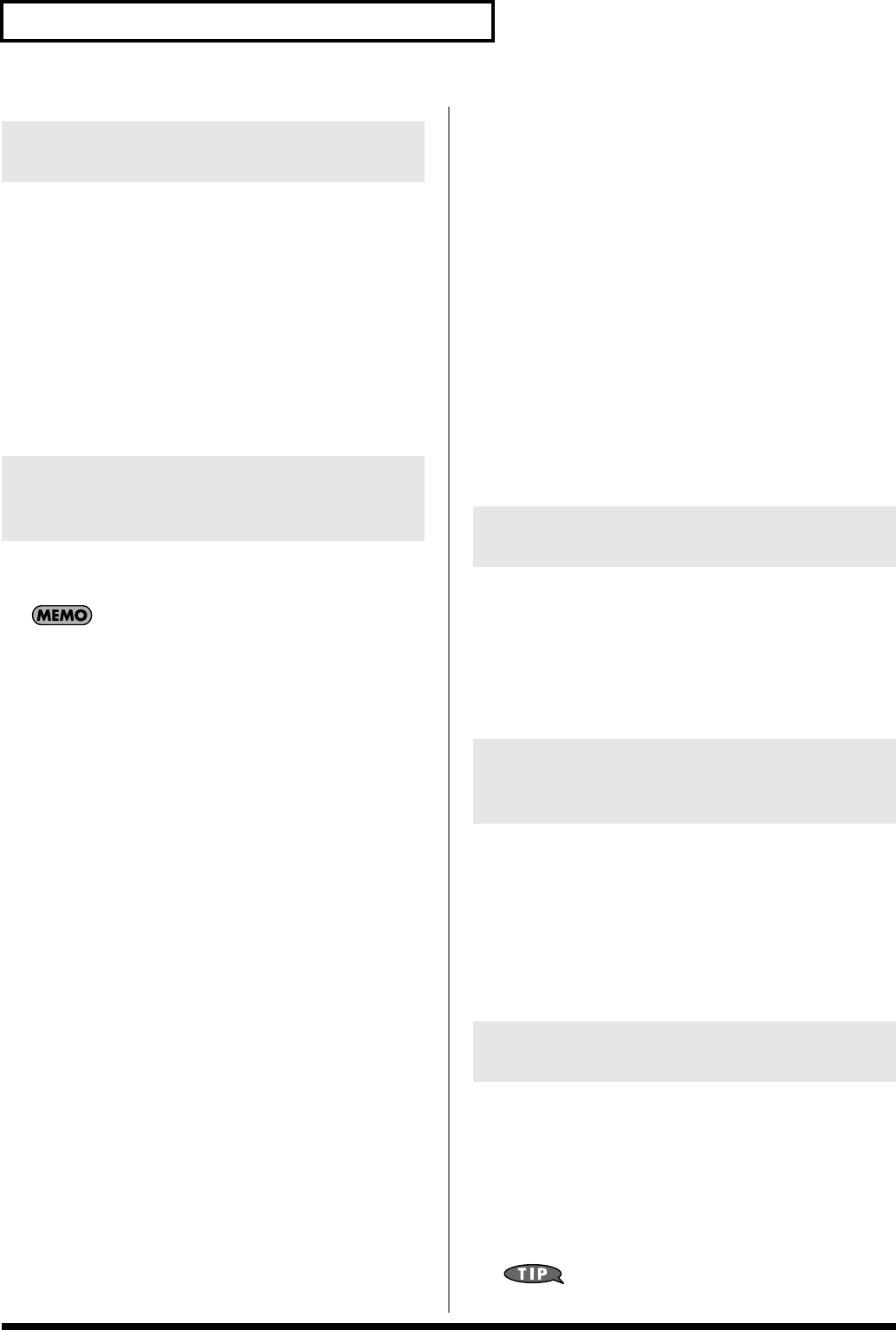
130
Playing Arpeggios
This setting (duration) determines whether the sounds are played
staccato (short and clipped), or tenuto (fully drawn out).
* Grid settings are shared with the rhythm pattern.
Value:
30, 40, 50, 60, 70, 80, 90, 100, 120, Full
30–120:
For example, when set to “30,” the length of the note
in a grid (or when a series of grids is connected with
ties, the final grid) is 30% of the full length of the
note set in the grid type.
FUL (Full):
Even if the linked grid is not connected with a tie,
the same note continues to sound until the point at
which the next new sound is specified.
This selects the method used to play sounds (motif) when you have a
greater number of notes than programmed for the Arpeggio Style.
When the number of keys played is less than the number of
notes in the Style, the highest-pitched of the pressed keys is
played by default.
Value:
UP (L):
Only the lowest of the keys pressed is sounded
each time, and the notes play in order from the
lowest of the pressed keys.
UP (L&H):
Notes from both the lowest and highest pressed
keys are sounded each time, and the notes play
in order from the lowest of the pressed keys.
UP (_):
The notes play in order from the lowest of the
pressed keys. No one note is played every time.
DOWN (L):
Only the lowest of the keys pressed is sounded
each time, and the notes play in order from the
highest of the pressed keys.
DOWN (L&H):
Notes from both the lowest and highest pressed
keys are sounded each time, and the notes play
in order from the highest of the pressed keys.
DOWN (_):
The notes play in order from the highest of the
pressed keys. No note is played every time.
UP&DOWN (L):
Notes will be sounded from the lowest to the
highest key you press and then back down to the
lowest key, with only the lowest key sounded
each time.
UP&DOWN (L&H):
Notes from both the lowest and highest pressed
keys are sounded each time, and the notes play
in order from the lowest of the pressed keys and
then back again in the reverse order.
UP&DOWN (_):
The notes play in order from the lowest of the
pressed keys, and then back again in the reverse
order. No note is played every time.
RANDOM (L):
Notes will be sounded randomly for the keys
you press, with only the lowest key sounded
each time.
RANDOM (_):
Only the lowest of the keys pressed is sounded
each time, the notes you press will be sounded
randomly. No note will sound each time.
PHRASE:
Pressing just one key will play a phrase based on
the pitch of that key. If you press more than one
key, the key you press last will be used.
<Example>
Action of a Style starting from the lowest note, “1-2-3-2” when the
keys “C-D-E-F-G” are played
When “UP (L)” is selected as the motif:
C-D-E-D -> C-E-F-E -> C-F-G-F (-> repeated)
When “UP (_)” is selected as the motif:
C-D-E-D -> D-E-F-E -> E-F-G-F (-> repeated)
When “UP&DOWN (L&H)” is selected as the motif:
C-D-G-D -> C-E-G-E -> C-F-G-F -> C-E-G-E (-> repeated)
Specifies the loudness of the notes that you play.
If you want the velocity value of each note to depend on how
strongly you play the keyboard, set this parameter to REAL. If you
want each note to have a fixed velocity regardless of how strongly
you play the keyboard, set this parameter to the desired value (1–
127).
Value:
REAL, 1–127
Here’s how to specify the part that will use the arpeggio in
Performance mode. You can specify only one part for playing
arpeggios.
If a rhythm set is assigned to a part in Performance mode, you can
play a rhythm pattern along with the arpeggios.
The part you select here functions for both the arpeggio and the
chord memory functions.
Value:
Part1–16
When you play arpeggios, the velocity of each arpeggiated note is
determined by the velocity of the notes programmed within the
arpeggio style. You can adjust the amount (“spread”) of this
dynamic variation. With a setting of 100%, the arpeggiated notes will
have the velocities that are programmed by the arpeggio style. With
a setting of 0%, all arpeggiated notes will be sounded at a fixed
velocity.
Value:
0-100%
You can also use a REALTIME CONTROL knob to control this.
Applying Staccato and Tenuto
(Arp/Rhythm Duration)
Selecting Ascending/Descending
Variations (Different Ways of
Playing the Sounds) (Arp Motif)
Adjusting the Velocity of the
Arpeggio (Arp Velocity)
Selecting the Part that Will Play
Arpeggios in Performance Mode
(Arp Part)
Changing the Accent Strength (Arp
Accent)
Fantom-X678_r_e.book 130 ページ 2005年5月12日 木曜日 午後4時40分


















